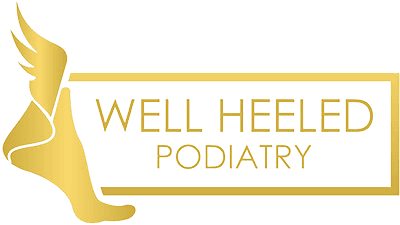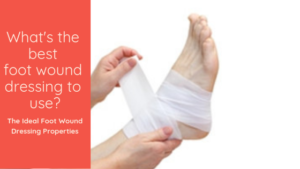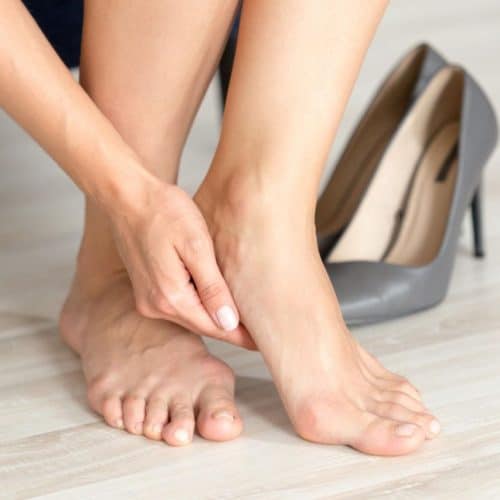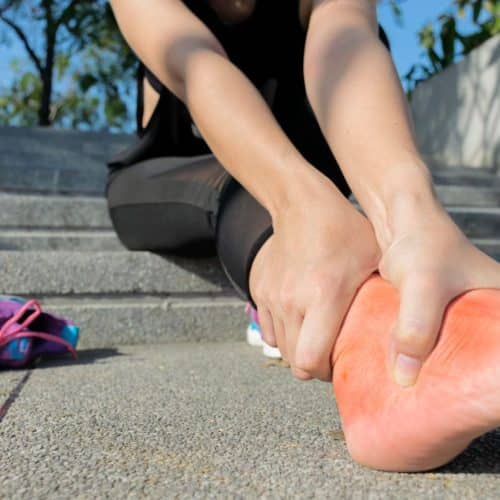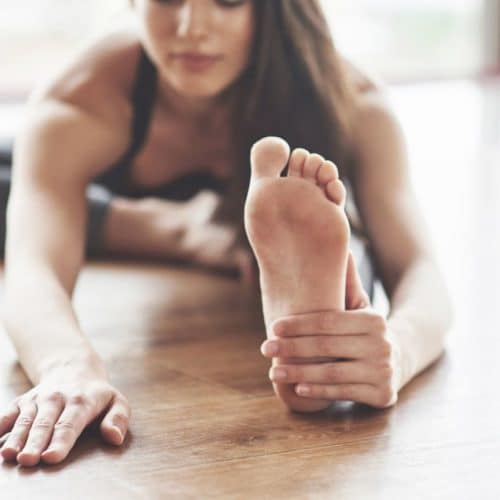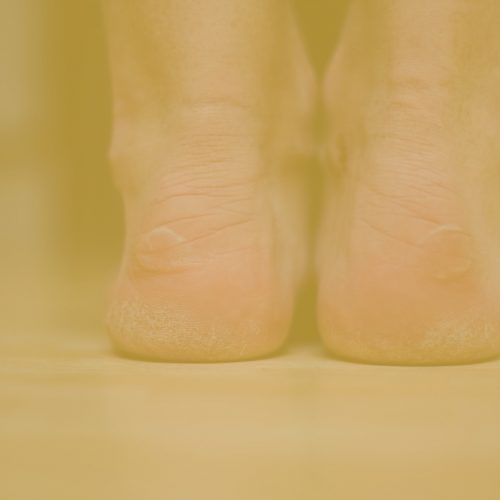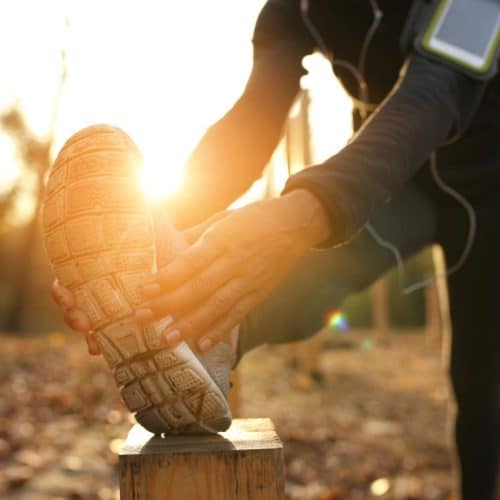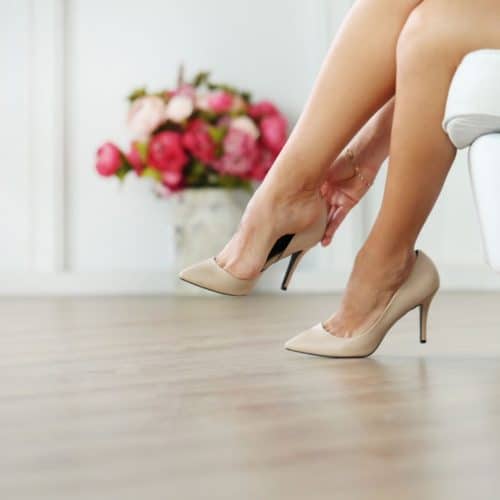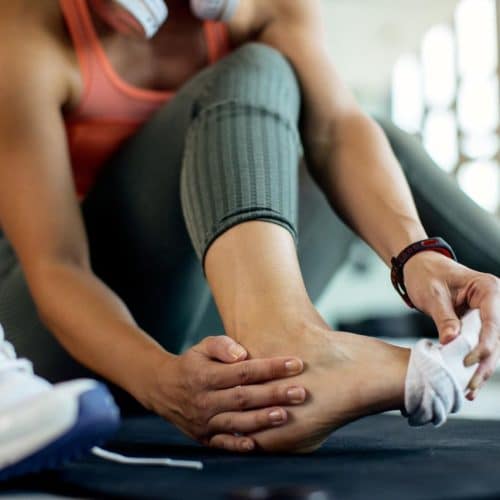Is a condition that refers to the loss of fat pads in the balls of the feet, which causes thinning of the protective cushioning that sits under the bones.
This is commonly seen in elderly people causing significant pain while walking, as the shock absorption from the fatty tissue is no longer there.
Without the fat pads the whole bodyweight shifts onto these bones with minimal to no protection. Therefore the load under this area is unable to be spread out effectively leading to pain, inflammation and over time possible damage to the bones.
Although plantar fat pad atrophy effects both men and women equally, the choice of footwear makes women more susceptible to developing pain and callouses on the ball of the foot. Callus that is not treated may lead to ulceration of the underlying tissue.
Similarly, there is a fat pad under the heel bone, as we stand or walk, the body weight is transferred through the heels and ball of the foot, so both these areas need protection.
Causes of Plantar Fat Pad Atrophy (Loss of Fat Pads on Feet):
- Age is the most common cause, as fatty tissue is reduced in the foot, like it is around the rest of the body.
- Collapsed long bones in the balls of the feet leading to increase pressure, wearing out the fat pad over time.
- Wearing high heels, walking barefoot or in very thinned soled shoes may initiate or exacerbate the condition.
- Extremely high arches are increase weight goes through the balls of the feet.
- Excessive pronation (rolling in) as increased pressure is put on the balls of the feet.
- Injury to the ball of the foot, multiple surgery incisions or fractures can lead to thinning and displacement of the fat pad.
- Genetics are considered to be a cause behind excessive loss of fat pads on feet.
- Rheumatoid arthritis, which causes clawing of the toes and more prominent bones in the balls of the feet.
- There is often thinning and loss of fat pad on feet in people with diabetes especially if they have neuropathy (no feeling), which increases the risk of developing foot ulcers.
Symptoms of Plantar Fat Pad Atrophy (Loss of Fat Pads on Feet):
- Experiencing pain in the ball of the foot, worse when barefoot, in heels or thinned soled shoes.
- Pain which is greater when standing and relieved when sitting.
- The feeling of having a small rock in the shoe.
- Callouses may appear and become very thick on the ball of the foot.
- When feeling the balls of the feet, you can feel the bones without much overlying fatty tissue.
Treatment for Fat Pad Atrophy (Loss of Fat Pads on Feet):
- Avoid activities that require walking on tiptoes, squatting, walking down a slope or any action that puts pressure on the balls of the feet, this includes high heel wearing.
- Wear low heels (an inch or less) and avoid barefoot walking.
- Switch high impact weight bearing exercise to low impact alternatives, such as cycling, swimming and pool running.
- Supportive orthotics with a soft top cover to evenly distribute weight to the soles of the feet, and provides adequate shock absorption and comfort.
- Soft paddings may also be beneficial and suggested by your podiatrist.
- Wear supportive footwear that also provides cushioning to the feet.
Surgical Treatment
If conservative methods of treatment fail, surgery may be an option, although this is rarely the case.
Surgery will involve correcting any collapsed long bones in the balls of the feet and securing with a pin. Fillers may be used to replace the fat pad; however this is not common practice.
Fat Pad Syndrome
This is not a commonly encountered condition, but is frequently misdiagnoses. Fat Pad Syndrome will present pain located in the centre of the heel, which can feel like a deep bruise. This condition may also be associated with calcaneal apophysitis (inflammation of the heel bone).
The thick pad between the skin and the bone of the heel is called a ‘fat pad’ because it’s made up primarily of fatty tissue. This fat pad aids in the cushioning and shock absorption of the heel bone.
This fat pad is kept in place by fascia, if this structure becomes stretched or damaged the fat pad can spread out reducing the cushioning under the heel, resulting in Fat Pad Syndrome.
Causes of Fat Pad Syndrome:
- Trauma from landing heel first on a hard surface (after a jump or fall).
- Prolonged standing or walking on hard surfaces with inappropriate thinned soled footwear.
- Age can cause the fat pad to flatten, reducing its ability to absorb shock and protect the heel bone.
- Excessive heel strike with poor footwear can damage the fat pad.
- Overweight, as this leads to increased pressure and shock going through the fat pad.
Symptoms of Fat Pad Syndrome:
- Deep, dull ache that feels like a bruise in the middle of the heel, when standing or walking.
- Pain is aggravated by walking barefoot, or on hard surfaces.
- Unlike plantar fasciitis, fat pad related pain is felt more at the outer side of the heel during heel strike.
- MRI investigations will reveal changes in the fat pad showing signs of swelling.
Treatment for Fat Pad Syndrome:
- Taping the heel to hold the fat pad in place, providing more protection to the bone. If symptoms subside your diagnosis of fat pad atrophy have been confirmed
- Deep heel cups to hold the fat pad in place, ordered from your podiatrist.
- Heel pads may also be used to add extra cushioning (foam or gel).
- Anti-inflammatory medication and icing may help for flare ups.
- Stretching and strengthening program customised by your podiatrist.
- Supportive footwear with firm heel counters and midsoles, that provides heel cushioning.
- Chronic cases may need to be treated with custom foot orthoses with a deepened heel cup to stabilise the bones of the feet and provide more restricted fat pad containment, heel protection and cushioning.
Well Heeled Podiatry will undertake an initial assessment to diagnose and identify the cause of your injury. The podiatrist will help reduce your pain, accelerate healing and increase cushioning to the heel so that you can get back to your activities of daily living with more confidence.

